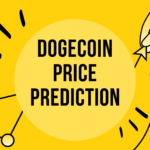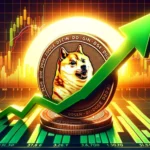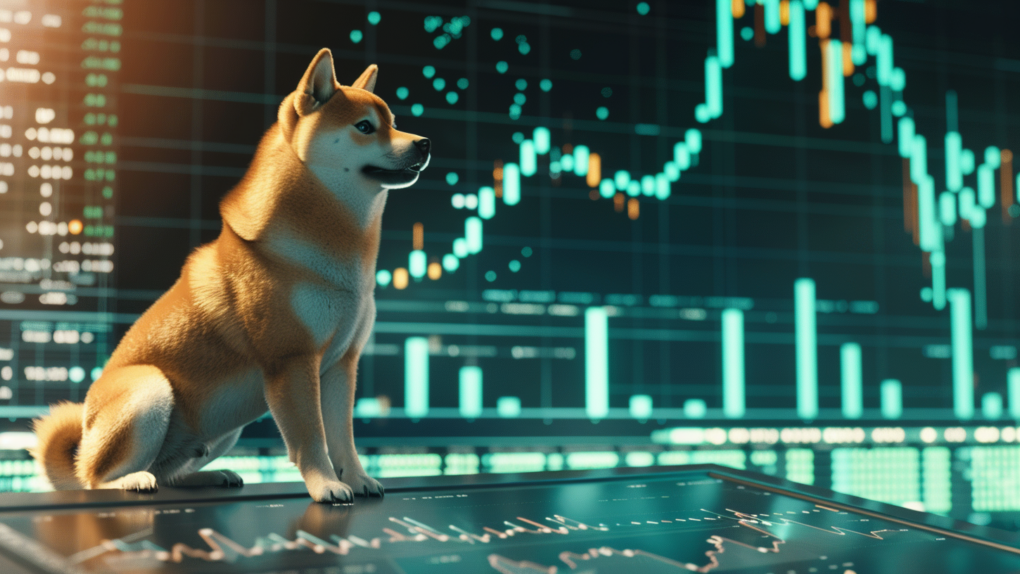Dogecoin (DOGE), once known primarily as a meme coin, has evolved into one of the most talkedabout cryptocurrencies in the market. Originally created as a joke in 2013, Dogecoin has surprised many by achieving significant mainstream recognition and even a dedicated investor following. Despite its growing popularity, Dogecoin remains a highly volatile asset, with its price often fluctuating wildly in short periods. So, why is Dogecoin’s price fluctuating so much, and what does this mean for investors looking to navigate this rollercoaster?
In this article, we’ll explore the reasons behind the frequent price swings in Dogecoin and break down what these fluctuations mean for both shortterm traders and longterm investors.
Factors Behind Dogecoin’s Price Fluctuations
The price of Dogecoin is driven by a combination of factors, including broader market trends, investor sentiment, social media influence, and its speculative nature. Let’s dive into some of the key reasons behind its price volatility.
1. Influence of Market Sentiment and Broader Cryptocurrency Trends
Like most cryptocurrencies, Dogecoin is highly influenced by market sentiment and the performance of larger cryptocurrencies like Bitcoin and Ethereum. When the overall cryptocurrency market experiences a surge—driven by positive news or institutional interest—altcoins like Dogecoin often see similar upward momentum. Conversely, when Bitcoin and Ethereum face selloffs or corrections, Dogecoin is usually swept up in the same downward movement.
This correlation is due to the fact that many altcoins, including Dogecoin, are viewed as riskier assets. Investors tend to shift their capital between Bitcoin, Ethereum, and other altcoins based on market sentiment. For instance, if Bitcoin hits a new high, Dogecoin could see an increase in trading volume as investors look to capitalize on rising altcoin prices. But if Bitcoin faces a price drop, altcoins like Dogecoin may face even steeper declines due to their higher volatility.
2. The Role of Elon Musk and Celebrity Influence
One of the most unique and defining factors driving Dogecoin’s price fluctuations is the influence of Elon Musk, the CEO of Tesla and SpaceX. Musk has been an outspoken supporter of Dogecoin, often posting memes, making jokes, and even suggesting that Dogecoin could one day be used for realworld transactions, like buying products from Tesla. His comments—whether positive or playful—can cause dramatic price movements.
For example, when Musk tweeted about Tesla accepting Dogecoin for certain products, or when he posted memes like “Doge to the moon,” Dogecoin’s price spiked almost instantly. On the flip side, if Musk makes a negative remark or shifts his attention elsewhere, Dogecoin can face sharp declines. His ability to influence Dogecoin’s price highlights how social media and celebrity endorsements play a significant role in the price action of meme coins.
While Musk’s influence on Dogecoin is undeniably strong, it also means that the price of DOGE is highly susceptible to shifts in Musk’s attention. The coin’s speculative nature and reliance on these endorsements make it prone to sharp swings in value, making it difficult to predict its longerterm trajectory.
3. The Meme Culture and Social Media Buzz
Dogecoin’s roots in internet meme culture are a major contributor to its price volatility. The DogeArmy—a passionate group of Dogecoin supporters on platforms like Twitter, Reddit, and TikTok—can send the price of Dogecoin soaring through coordinated social media campaigns. Often, a viral meme or trending hashtag can prompt a massive influx of new retail investors looking to capitalize on the hype.
For example, TikTok influencers have played a pivotal role in driving Dogecoin’s price by encouraging their followers to invest in the coin, often leading to quick surges in demand and price. Similarly, when highprofile personalities or social media figures post about Dogecoin, its price tends to move sharply in the direction of the sentiment.
While this culture of hype and memes has brought Dogecoin into the spotlight, it also means that Dogecoin’s price can experience high volatility due to these unpredictable, socialmediadriven movements. When the hype dies down or new trends emerge, Dogecoin can lose momentum, causing its price to drop just as quickly as it rose.
4. Lack of a Clear Use Case or Utility
While Bitcoin and Ethereum have relatively clear use cases—Bitcoin as a store of value and Ethereum as the backbone of decentralized finance (DeFi) and smart contracts—Dogecoin lacks the same degree of utility. Although it has seen some adoption for payments (such as through Tesla’s merchandise), Dogecoin’s primary value is driven by speculation and community support rather than fundamental use cases.
This lack of intrinsic value can make Dogecoin’s price more susceptible to swings based on investor perception rather than realworld adoption or technical development. In contrast, cryptocurrencies like Bitcoin and Ethereum are often driven by their evolving technology and network effects, providing them with more resilience against market fluctuations.
In Dogecoin’s case, any news—whether it’s a celebrity endorsement, a social media campaign, or a major market trend—can move the price. But in the absence of these external catalysts, Dogecoin can face sharp price corrections due to the lack of longterm foundational support.
5. Speculative Trading and FOMO (Fear of Missing Out)
Dogecoin’s price fluctuations are also fueled by speculative trading and the fear of missing out (FOMO). Many Dogecoin investors and traders enter the market in hopes of capitalizing on shortterm price movements, rather than holding the coin for its longterm potential. When Dogecoin’s price starts rising rapidly, it can trigger FOMO, where investors rush in to buy, fearing they will miss the opportunity to profit.
However, this often leads to unsustainable price surges, followed by corrections when traders cash out and take profits. In the crypto space, where emotions like greed and fear play a huge role in decisionmaking, Dogecoin can experience cycles of rapid gains followed by sharp declines, as traders react to price movements rather than the coin’s fundamentals.
What Does Dogecoin’s Volatility Mean for Investors?
For investors, Dogecoin’s volatility presents both opportunities and risks. Let’s break down what Dogecoin’s fluctuating price means for different types of investors.
1. ShortTerm Traders: Capitalizing on Volatility
For shortterm traders, Dogecoin offers plenty of opportunities to profit from its price swings. The coin’s high volatility means that traders can potentially make gains by buying during dips and selling during spikes. However, this approach requires a solid understanding of market timing and a willingness to embrace risk. Traders need to stay uptodate with the latest news, social media trends, and market sentiment to take advantage of these fluctuations.
That said, shortterm trading in Dogecoin is risky. If you’re not careful, you could be caught in a price crash or miss out on a buying opportunity due to sudden price swings. The market can turn quickly, and without proper risk management, traders can experience significant losses.
2. LongTerm Investors: Watching for Real Utility and Adoption
For longterm investors, Dogecoin presents a different set of challenges. While the coin has gained significant community support, celebrity endorsements, and limited realworld adoption, its longterm viability hinges on its ability to establish a clear use case beyond speculation. Investors looking to hold Dogecoin for the long term should pay close attention to any developments that might increase its realworld utility, such as more merchants accepting DOGE or significant technological upgrades to its blockchain.
The key for longterm investors is to evaluate the coin’s fundamentals beyond the hype. If Dogecoin can carve out a niche use case and expand its adoption, its price could stabilize and potentially increase over time. But if Dogecoin remains primarily driven by speculative trading and social media trends, it may continue to experience periods of wild fluctuations that make it a highrisk, highreward investment.
3. Risk Management and Diversification
For any Dogecoin investor, risk management is crucial. Given the coin’s high volatility, it’s important not to put all of your funds into a single asset. Diversification—investing in a mix of assets, including Bitcoin, Ethereum, and other altcoins—can help mitigate some of the risks associated with Dogecoin’s price fluctuations.
Additionally, setting clear entry and exit points, using stoploss orders, and only investing what you can afford to lose are essential strategies to manage the risk of price swings.
Conclusion: Is Dogecoin’s Price Fluctuation Sustainable?
Dogecoin’s price fluctuations are a result of a combination of factors, including market sentiment, celebrity endorsements, social media buzz, and its speculative nature. While these fluctuations can present opportunities for shortterm traders, they also expose the coin to risks, especially for longterm investors seeking stability.
For investors, understanding why Dogecoin’s price is so volatile is key to navigating the market. Whether you’re a shortterm trader looking to capitalize on price swings or a longterm investor hoping for adoption and realworld use cases, Dogecoin’s rollercoaster ride is far from over. As with any cryptocurrency, it’s important to stay informed, practice sound risk management, and keep a close eye on market trends to make the most of Dogecoin’s price fluctuations.









